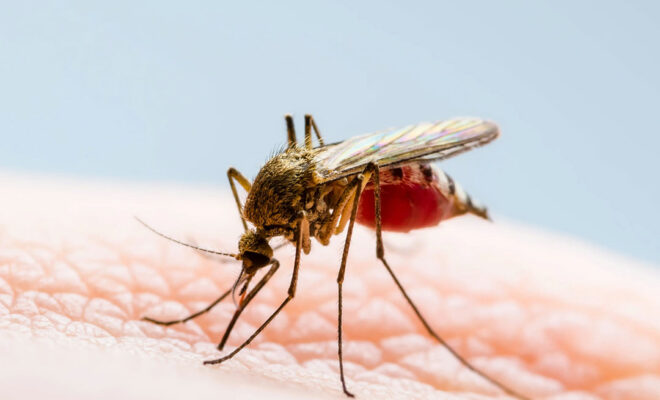Yaz Gribi

Grip, influenza virüsünün neden olduğu oldukça bulaşıcı bir solunum yolu enfeksiyonudur. Virüs, sonbahar ve kış aylarında ortaya çıkan mevsimsel solunum yolu hastalığı salgınlarına neden olur. Grip aktivitesinin mevsimselliğine rağmen, birçok insan yaz aylarında grip benzeri semptomlar yaşayabilir.
Belirti ve bulgular:
Grip aniden başlar ve esas olarak burun, boğaz ve akciğerler dahil olmak üzere solunum sisteminizi etkiler. Belirtiler şunları içerir:
- Burun akması
- Öksürük
- Sürekli Hapşırma
- Baş ağrısı ve vücut ağrısı
- Mide bulantısı ve kusma
- İshal
- Ateş ve halsizlik
- Boğaz ağrısı
- Göğüs ağrısı (ağır vakalarda)
- Yorgunluk
Bu semptomlar birçok hastalıkta ortaktır ve bu semptomları sergilemek mutlaka grip olduğunuz anlamına gelmez, bu nedenle bu semptomların diğer olasılıklarını ortadan kaldırmak için semptomlarınızı doktorunuzla görüşmeniz gerekir.
Nedenler:
Birçok neden olsa da en yaygın olanları:
1- Klimalar ve Fanlar
Fanlar ve klimalar vücudun belirli bölgelerinde hızlı soğumaya neden olabilir ve patojenlerin vücuda girmesine izin verebilir. Ani sıcaklık değişimi vücutta strese neden olabilir. Klimalı odalara girmek, soğuk ortamda ter hemen buharlaştığı için soğuk algınlığına yakalanma riskini artırabilir.
Vücudun kendi soğutma sisteminin etkisi klima ile birleştiği zaman vücut soğumaya başlar.
Özellikle akşam saatlerinde sıcaklık genellikle hızlı düştüğü için bu saatlerde dikkatli olmak da önemlidir.
2- Nezle, Soğuk algınlığı
Soğuk algınlığı, çeşitli virüslerin neden olduğu başka bir solunum yolu enfeksiyonudur.
Burun akıntısı veya tıkanıklık, öksürme veya hapşırma ve boğaz ağrısı gibi soğuk algınlığı semptomları ile grip semptomları arasında çok fazla örtüşme vardır.
Bununla birlikte, gripten farklı olarak, soğuk algınlığı semptomları yavaş yavaş gelişir ve çoğunlukla daha az şiddetlidir.
3- COVID-19
COVID-19 enfeksiyonunun gribe benzeyen bazı semptomları vardır ve hastalığın yıl boyunca aktif kaldığı gösterilmiştir. SARS-CoV-2 virüsüne maruz kalan kişiler hastalığa yakalanır ve aşağıdakileri içeren birkaç grip benzeri semptom gösterir:
- Ateş ve halsizlik
- Yorgunluk ve yorgunluk
- Baş ağrısı
- Kas krampları
- Titreme
- Bulantı kusma
- İshal
- Öksürük (genellikle kuru)
- Göğüs ağrısı
- Nefes almada zorluk
- Koku ve tat kaybı
Yukarıdaki belirtilerden herhangi birini sergiliyorsanız, test yaptırmak ve tıbbi yardım istemek akıllıca olacaktır.
4- Gastroenterit ve gıda zehirlenmesi
Gastroenterit genellikle “mide gribi” olarak bilinse de grip ile bir bağlantısı yoktur. Gastroenterit oluşumuna genellikle norovirüsler veya rotavirüsler gibi bir grup virüs neden olmaktadır.
Gribin aksine, gastroenterit semptomları gastrointestinal sisteminize daha fazla odaklanır ve sulu ishal ve karın krampları gibi semptomlara yol açar.
Gıda zehirlenmesi, bakteri, virüs veya diğer patojenleri ve bunların toksinlerini içeren kontamine gıdaların neden olduğu bir durumdur. Durumun semptomlarının çoğu gastrointestinal sistemle sınırlıdır ve solunum sistemini içermez.
5- Pnömoni:
Pnömoni akciğerlerde oluşan bir enfeksiyondur. Soğuk algınlığı ise bu hastalığın semptomlarından biridir.
Özellikle pnömoniye işaret edebilecek belirtiler arasında yeşil veya sarı mukuslu öksürük, nefes darlığı ve göğüs ağrısı vardır.
Teşhis:
Tanı esas olarak hastadan alınan öykü ve doktor tarafından yapılan fizik muayene ile konulur.
Bazı durumlarda, doğru teşhis için doktorunuz tarafından istenen kan testlerini yaptırmanız gerekebilir.
Doktorunuzu ne zaman görmeniz gerekiyor?
Aşağıdakilerden herhangi birini yaşıyorsanız, doktorunuzu görmelisiniz:
- 103 ° F (39.4 ° C) üzerinde ateş
- Sarı, yeşil veya kahverengi mukus içeren öksürük
- Nefes darlığı
- Göğüs ağrısı, özellikle nefes alırken
- Baş dönmesi veya bayılma
- Döküntü
Yüksek risk grupları şunları içerir:
- 5 yaşın altındaki çocuklar (özellikle 2 yaşın altındakiler)
- 18 yaşında veya daha küçükseniz ve aspirin veya salisilat içeren ilaçlar alıyorsanız
- 65 yaş ve üzeri
- Hamileyseniz veya son iki hafta içinde doğum yapmışsanız
- Zayıflamış bir bağışıklık sistemine sahip olmak
- Kalp hastalığı, akciğer hastalığı veya diyabet gibi ciddi bir kronik rahatsızlığın olması
Tedavi:
- Antiviral ilaçlar
Asoseltamivir (Tamiflu) ve Zanamivir (Relenza) gibi antiviral ilaçlar, influenza enfeksiyonlarının tedavisine yardımcı olabilir.
- Evde uygulanabilecek tedaviler
- Nurofen Cold and Flu gibi ağrıyı ve ateşi azaltan reçetesiz satılan ilaçlar kullanmak.
- Bağışıklık sisteminize yardımcı olacak paracetamol ve C vitamini takviyeleri kullanmak.
- Dehidratasyon olmaması içi bol miktarda berrak sıvı tüketmek.
- Boğaz ağrısını yatıştırmak için çay ve et suyu gibi ılık sıvılar içmek
- Reçetesiz satılan öksürük kesici ve dekonjestanlar almak
- Sinüsleri ve boğazı açmaya yardımcı olmak için buhar tedavisi yapmak
Summer flu
Definition:
The flu is a highly contagious respiratory infection caused by the influenza virus. The virus causes seasonal epidemics of respiratory illness that occur during the fall and winter months. Despite the seasonality of influenza activity, many people may experience flu-like symptoms during the summer.
Signs and symptoms:
Flu onset is sudden and it mainly affects your respiratory system including nose, throat, and lungs.
Symptoms include:
- Runny nose
- Cough
- Persistent Sneezing
- Headache and body ache
- Nausea and vomiting
- Diarrhea
- Fever and malaise
- Sore throat
- Chest pain (in severe cases)
- Exhaustion and fatigue
These symptoms are common to several diseases, and showcasing these symptoms doesn’t necessarily mean you’ve contracted the flu. Therefore, you need to discuss your symptoms with your doctor to exclude the other possibilities of these symptoms.
Causes:
There are many causes but the most common ones are:
1- Air conditioners and fans
Fans and air conditioners can lead to rapid cool down in certain parts of the body and may allow pathogens to invade the body. The sudden change of temperature can lead to stress in the body. Entering air-conditioned rooms can increase the risk of catching cold as sweat evaporates immediately in the cooler environment.
The effect of the body’s own cooling system is superimposed with the air conditioner, and the body starts cooling down.
It is also important to be careful especially in the evening hours, as the temperature usually fall relatively quickly.
2- Common cold
The common cold is another respiratory infection caused by a variety of viruses.
There’s a lot of overlap between the symptoms of the common cold and those of the flu, such as a runny nose or congestion, coughing or sneezing, and sore throat.
However, unlike the flu, the symptoms of the common cold develop gradually and are most often less severe.
3- COVID-19
The COVID-19 infection has several symptoms that resemble the flu, and the disease has been shown to remain active throughout the year. Individuals that have been exposed to the SARS-CoV-2 virus contract the disease and show several flu-like symptoms that include:
- Fever & malaise
- Exhaustion & fatigue
- Headache
- Muscle cramps
- Chills
- Nausea & vomiting
- Diarrhea
- Cough (often dry)
- Chest pain
- Discomfort in breathing
- A loss of smell & taste
COVID-19 is an emerging infectious disease due to the ongoing pandemic. If you’re showcasing any of the above symptoms, it would be wise to get tested and seek medical attention.
4- Gastroenteritis and food poisoning
Although gastroenteritis is often referred to as the “stomach flu,” it’s not related to influenza. It’s often caused by a number of viruses, such as noroviruses or rotaviruses.
In contrast to the flu, the symptoms of gastroenteritis are more focused around your gastrointestinal tract and may include watery diarrhea and abdominal cramps.
Food poisoning is a condition that is caused by contaminated food containing bacteria, viruses, or other pathogens and their toxins. Most of the condition’s symptoms are limited to the gastrointestinal tract and do not involve the respiratory system.
5- Pneumonia:
Pneumonia is an infection of the lungs and it can also be a complication of the flu. Symptoms to look out for that can point specifically to pneumonia include cough with green or yellow mucus, shortness of breath, and sharp chest pain.
Diagnosis:
Diagnosis is mainly done using patient history and the physical examination carried out by the doctor. In some cases, you may need to do some blood tests ordered by your doctor to look for any other possible disease with similar symptoms.
When do you have to see your doctor?
You should see your doctor if you’re experiencing any of the following symptoms:
- fever over 103°F (39.4°C)
- cough that includes yellow, green, or brown mucus
- shortness of breath
- pain in your chest, particularly when breathing in
- light-headedness, dizziness, or passing out
- rash and persistent vomiting
high risk groups include people who:
- are under 5 years old (especially those who are under 2 years old)
- are 18 years old or younger and taking medications containing aspirin or salicylate
- are at least 65 years old
- Are pregnant or have given birth in the past two weeks
- have a weakened immune system
- have a serious chronic condition, such as heart disease, lung disease or diabetes
Treatment:
Antiviral medications
Antiviral medications, such as oseltamivir (Tamiflu) and zanamivir (Relenza) can help treat influenza infections.
Home remedies
- Taking over-the-counter medications that reduce pain and a fever such as Nurofen cold and flu. Paracetamol and vitamin c supplements which will help your immune system.
- Avoid sudden change of temperature such as sitting under the air condition for a while after being in the hot weather outside.
- Drinking plenty of clear fluids to stay hydrated
- Drinking warm liquids, such as teas and broths, to soothe a sore throat
- Taking over-the-counter cough suppressants and decongestants
- Using a humidifier to add moisture to indoor air which makes it easier to breathe
- Steam inhalation to help open the sinuses and throat
Dr. Ali Alsahli
Elite Hospital Acil Servis
Randevu İçin Bize Ulaşın:
Telefon Hattı: 0392 444 3548 (ELIT)
İletişim Formu: https://www.elitenicosia.com/iletisim/

















